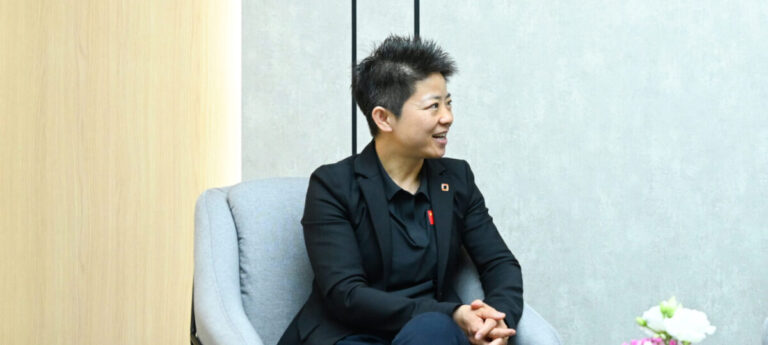Yang Meng, Sungrow’s distribution director in Europe, says that despite signs of softening demand in parts of the residential segment, the European solar and storage markets are on a stable path, with potential for growth in commercial and industrial storage.
You recently attended the Smarter E Europe event in Munich, Germany. What was your impression after the show? What is the state of the European market?
This year I have noticed that the event remains busy and attracts many participants. However, unlike last year, I have noticed a lack of new entrants to the European market. Last year we witnessed a significant influx of new companies debuting on the stock exchange. This year many of those same players appear to be absent, leaving us with little to see. In addition, some of our competitors appear to have reduced their stand size compared to previous years. Despite these changes, I am convinced that there are vibrant markets in Europe, and I expect demand to remain stable in the future.
Not like the last two years?
No, the situation is not comparable to that of the past two years. In those years, demand rose to unprecedented heights. However, I believe the market will achieve some degree of organization this year. This will therefore lead to some participants leaving the competition. This is consistent with our current market observations and the predictions of industry forecasters.
Do you think some tier-1 brands will also exit the market?
I am confident that established brands will continue to exist in this industry. However, it is the young entrants and smaller companies that are likely to falter. The lack of local service providers and regional offices accessible to installers will continue to increase, especially when price competition reaches its peak and further reductions become unsustainable.
Despite the general expectation of a slowdown in the European market, do you see specific countries or market segments flourishing?
Absolute. My previous discussion concerns the accumulation of residential storage systems in Europe. Nevertheless, we are witnessing substantial expansion in the larger storage segments, especially in the commercial and industrial sectors. In many markets, grid congestion or inherently weak networks make it necessary for small and medium-sized enterprises to stabilize and secure their electricity supply. In addition, certain markets offer lucrative revenue streams for support services, for which we have products specifically tailored to this segment. Even if there is a slight dip in one segment, our market segment that focuses on larger batteries is flourishing.
Historically, we have seen slower than expected demand from the C&I segment. What has changed now that makes you think this sector is finally ready for growth?
I believe that, despite the recent decline in electricity prices across Europe and relatively high interest rates on loans, companies are keen to invest in large-scale storage systems. There is a high demand for such systems. However, I recognize that this is still a relatively new topic for many business owners, and it may take several years before there is widespread understanding of the applications and benefits of commercial and industrial (C&I) storage. During this interim period, we will continue to develop more and more useful solutions for this segment.
So the batteries just keep getting bigger for Sungrow?
Yes, but this is only part of the equation. For example, we also see significant market trends in the German balcony PV market. That’s why we’ve introduced new, yet compact products to address these dynamics. We have specifically launched microinverters tailored for balcony PV systems as this segment offers huge potential for us. In addition, we recognize synergies, given the popularity of rooftop installations using microinverters in the Netherlands and France. Although the rooftop microinverter and the balcony PV inverter represent different products, we can effectively transfer knowledge and technologies between them, improving our overall portfolio.
How does your product strategy currently meet the demands of different markets? In the past, the challenges for inverter manufacturers extended beyond demand, with widespread semiconductor shortages affecting the entire market. What is the current situation?
There is currently no shortage of semiconductors.
Going forward, we are focused on continuing to innovate and develop new products that meet the changing needs of our customers. We believe that by staying ahead and anticipating market trends, we can maintain our position as a leading inverter manufacturer. We are excited about the opportunities ahead and look forward to providing our customers with high-quality, reliable products.
What is your current production capacity? Have you expanded it recently? How much of that is inactive?
The annual capacity of Sungrow ESS reaches 55 GWh, of which 45 GWh is under construction, and the annual production capacity of power electronic converters reaches 330 GW, with another 25 GW currently under construction.
How many inverters have you shipped in the last twelve months? How many do you expect to ship in the next twelve months?
Sungrow is a world-leading supplier of PV inverters and energy storage systems for renewable energy sources, with more than 515 GW of power electronic inverters installed worldwide as of December 2023, and its products installed in more than 170 countries and regions.
Global shipments of Sungrow PV inverters reached 130 GW in 2023, occupying the No. 1 position in global PV inverter shipments. And global shipments of energy storage systems exceeded 10.5 GWh in 2023.
As the global focus on renewable energy sources increases and environmental awareness grows stronger, we are confident that the solar industry will continue its robust growth trajectory. Likewise, energy storage, a crucial cornerstone for the future of energy systems, will develop in a steady and secure manner, paving the way for a more sustainable and environmentally friendly future.
This content is copyrighted and may not be reused. If you would like to collaborate with us and reuse some of our content, please contact: editors@pv-magazine.com.


